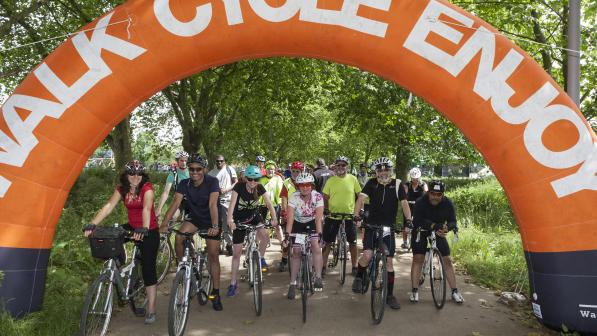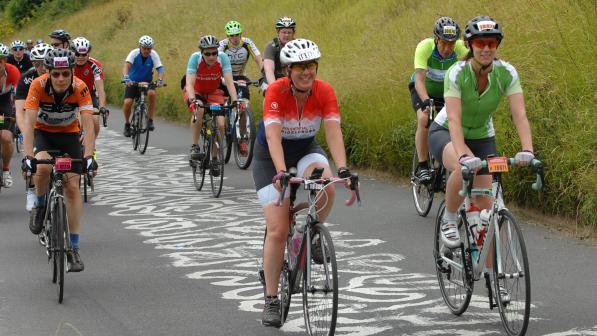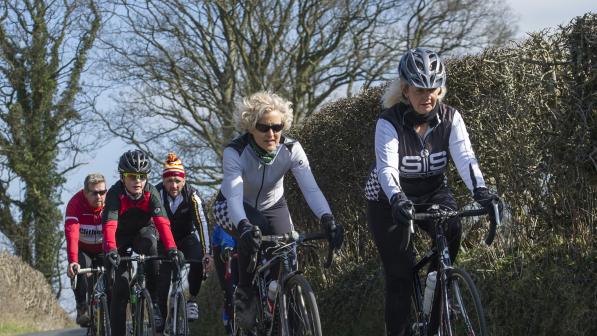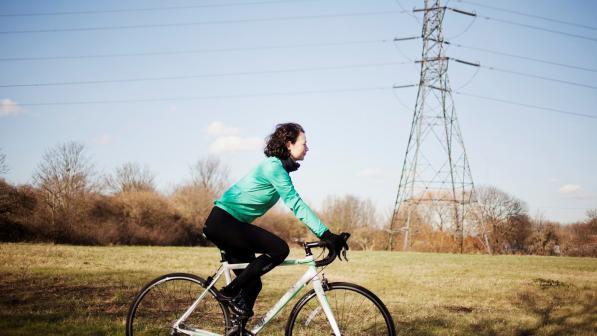10 things I wish I’d known about: my first sportive

Sportives are something of a rite of passage for keen – and even not so keen – cyclists. Long-distance, mass-participation organised events, they can be thought of as the cyclists’ version of a marathon.
While not races, they are timed, and you must complete the distance in the allotted time. Some take place on closed roads, others on quiet roads that are nonetheless open to traffic. There are also some off-road versions, although these are fewer in number at the moment.
If you cycle regularly, you can almost certainly complete a sportive. If you’ve been thinking about taking part in one but have doubts, here is some advice I wish I’d been given for my first.
I’ve taken part in several sportives, including three 100-milers. I’ve also ridden lots of long-distance rides both on my own and as part of a group.
1. Don’t overcommit
If this is your first sportive then Bealach Mor – a 90-mile ride in the Scottish Highlands taking in the UK's biggest road climb – probably isn’t for you. Look for something shorter and more manageable – and preferably with less spectacularly steep climbs.
Be realistic about your abilities and consider the longest rides you’ve completed so far. It’s much better to finish feeling like you could have done more than to throw your bike on the ground and swear you’ll never ride again – I’ve seen this happen on previous sportives.
At the same time, though, do challenge yourself to go further than you have done previously – maybe even a bit further than you think you can. You want to feel a sense of accomplishment when you cross the finish line.
Some suggestions to start with are London to Cambridge or London to Brighton in the south or the Etape Loch Ness for those further north. All are around 60 miles, with the first two flattish and the last on closed roads.
Others, like the New Forest sportive, have a choice of distances. Described as “a relaxed day in the saddle”, this event offers three routes: 100 miles, 63 miles and 39 miles.
2. Be prepared…
You want to be able to finish the ride, and ideally in a fit state to celebrate your achievement. This means doing some training.
A useful rule of thumb is that if you can comfortably do half your target distance, you’ll be able to complete the full route. You should ensure that you can ride at least half the full distance before setting off on the actual ride.
Working to a training plan will help motivate you and keep you on track. Cycling UK has put together a basic 10-week training plan for a 60-mile sportive, while British Cycling has a range of more comprehensive plans.
3. …But don’t overdo it
Enthusiasm is great, and when you’ve signed up for a sportive it’s easy to get excited and put pressure on yourself to perform well – especially if you’re raising money for a charity (may I suggest Cycling UK?).
However, it is possible to overtrain, and you don’t want to overdo things and tire yourself out before you even get to the start line.
Cycling is a very repetitive activity and can overuse certain muscles, which can lead to injury. Ensuring you’re fit for the ride means taking time out to rest. Complimenting your cycling with some yoga will also strengthen and lengthen muscles to help prevent injury.
4. Plan how to get to the start – and back
Unless your chosen sportive is close enough to ride to you’ll need to think about transport. Consider how you’ll get there, how far away it is and how long it’ll take you to get there. Many people drive and there’s often plenty of parking, but it’s not the most eco-friendly option.
If you’re travelling by public transport you’ll need to keep in mind how close to the event it can take you; there’s likely to be something of a ride for the final part of the journey. You’ll also be limited by timetables. Most of these events start early and take place on a Sunday, when trains are running a limited schedule.
Cycling to the start is always the best option if you can. But this adds to the total distance you’ll be riding. Be realistic – do you really want a 20-mile ride just to get to your 100-miler?
Don’t neglect getting back! Many events are circular so you can just go home the same way you arrived. But others are linear. You really don’t want to be stuck with your bike in Brighton on a Sunday evening with no way to get home and the prospect of work looming on Monday morning.
On that subject, if this your first long-distance ride you might want to reward yourself with a day off work if possible. A long lie-in might be just what you need!
5. The right kit
At Cycling UK we’re very much advocates of the advice that you can cycle in any clothing and the right bike is the one you happen to have. This is true most of the time. But a sportive has very different demands.
You will be spending hours in the saddle and you want that time to be as comfortable as possible. Just as you wouldn’t go swimming in boiler suit, you don’t want to be riding 60 miles in jeans and a T-shirt.
This is when Lycra, padded shorts, cycling shoes and lightweight, breathable jerseys all come into their own. A word of warning, though: if you’re going to treat yourself with new gear, break it in before the ride. The last thing you want is to discover your lovely new padded shorts rub 50 miles into a 100-mile event.
The same goes for what you’re riding. Make sure you have a suitable cycle for the sportive you’ve chosen, and that you can ride it comfortably for the time and distance required. Check you’re happy with the set-up before the event – the day before is not the time to swap out your saddle.
6. Pace yourself
You’ve done the training, you’ve safely arrived at the start line and you’re about to start pedalling. It’s tempting to set off at full pelt. Don’t! You’ll only tire yourself out at the beginning and risk not being able to finish.
I’ve seen this many times. People powering past me at the start only for me to catch up and overtake them later on. I’m still fresh as a daisy; they’re red faced and struggling.
It’s best to start off slowly and build up to a comfortable pace you can maintain for the whole distance. Keep it steady and you’ll be able to finish strongly – think tortoise rather than hare.

7. Use the feed stations
These are stopping points around the course. How many there are will depend on how long the sportive is. Make the most of them – even if you feel like you don’t need to.
There will be food and drink available so you can refuel and top up your water bottles. Sometimes the cost of the food is included in the entry fee, but not always. If this is the case make sure you’ve got money or your debit card handy.
These are also great places to regroup with friends if you’ve got separated or to meet and chat with other cyclists.
8. Pack snacks
This might seem to contradict the above advice, but just because there’s food on offer doesn’t mean you shouldn’t bring your own snacks. The food provided might not agree with you, or you might find yourself flagging several miles away from the next feed station.
You are responsible for yourself on these rides and that includes ensuring that you’re properly fuelled and hydrated. Keep a selection of your favourite cycling snacks to hand so that you’ll be able to keep going.
9. Take your own tools
With any luck you won’t suffer any mechanicals or punctures, but you might. If that happens, you’ll want to be able to fix any minor problems or change your inner tube. Make sure in advance that you know how to do this; Cycling UK has some excellent maintenance advice.
Make sure you have the right tools for the job. You don’t need much: a multitool, spare inner tube and a few spare parts should cover it. The bigger sportives often have mechanics at the stopping points to help with more major repairs.
Don’t rely on someone just helping you out. I’ve known people have to abandon the ride because they got a puncture and weren’t prepared to fix it themselves. It’s also a good idea to have your bike checked over a week or so before the event. You can do this yourself if you’re confident in your mechanical skills, or book it in with your local bike shop.
You should also take a phone, cash and debit card. It’s a good idea to have a map of the route, whether this is a paper version or a GPX file you can view on a bike computer or smartphone.
Our beginner’s guide to what to take on a day ride has some great advice on what to pack.
10. Go with a friend or find someone to ride with
It’s always more pleasant to ride with a friend. Chatting will keep your mind off the distance ahead of you, while you’ll be able to encourage each other if spirits flag.
If you can’t persuade anyone to go with you – sportives aren’t for everyone – talk to the people around you. There will almost certainly be others riding on their own who’ll appreciate a cycling buddy, even if only for part of the ride.
Sportives are an excellent way to experience some of the UK’s most beautiful countryside, whether that’s spectacular Welsh mountains on the Dragon Ride, sea eagle spotting on the Isle of Mull, stunning lakeside views of Lough Neagh or pretty medieval villages on the Cotswolds Classic. Some of the best advice I can offer you is: enjoy yourself! Make the most of all that stunning scenery and wonderful cycling.
The events tend to take place in summer to make the most of (usually) better weather and longer days. There are still several that you can sign up for this year, while many of 2024’s are already open for registration.




